In Round 2 of our series of handgun showdowns, we compared the Glock 19 and the Glock 23. Since those two are practically the same pistol and the only thing different about them were the rounds they were chambered for, we ended up having to compare 15 rounds of 9mm vs. 13 rounds of .40 S&W. The showdown ended with a draw. It would all boil down to individual preferences. And it wasn’t easy comparing those two, so I’m hoping today’s comparison of the Glock 17 vs Glock 34 will be a bit easier.
Table Of Contents
Too many compact handguns, why not get a full-size?
The answer to that question is very simple: smaller guns are easier to conceal carry. If you want more info on conceal-carrying and what your best options are, check out this post.
On Glock’s website there are only 14 compact/subcompact models in different calibers while there are only six “standard”-size pistols and only three “competition”-type long slides.
Both the Glock 17 and the Glock 34 are kind of in the same odd category — they are both bigger in total dimensions and have relatively longer barrel lengths compared to the majority of semi-autos Glock offers.
The Glock 17 vs. The Glock 34: In A NutShell
Looking at these polymer handguns’ specs on Glock’s website, we see no practical difference between them.
They both use the same frame size and they’re both chambered for the small, light and speedy — but some would argue it’s a bit wimpy — 9×19 Parabellum (I think the 9mm is a fine option for self defense. If you want to learn more, you can check out an article I wrote recently where I compared it to the .357 SIG).
Besides their similarities, Glock is also marketing both for law enforcement, handgun enthusiasts and competitive shooting.
But why is the Glock 17 being marketed as a first-time buyer’s handgun while the Glock 34 isn’t? They’re practically the same handguns. It just makes no sense! Is it due to the promise of safety and reliability at an affordable price?
Well, let’s try and find out.
Glock 17 vs Glock 34 – The Tale of the Tape
| Glock 17 | Glock 34 |
| Length: 8.03 in. | Length: 8.81 in. |
| Height: 5.43 in. | Height: 5.43 in. |
| Width: 1.18 in. | Width: 1.18 in. |
| Barrel Height: 1.26 in. | Barrel Height: 1.26 in. |
| Barrel Length: 4.48 in. | Barrel Length: 5.31 in. |
| Sight Radius: 6.49 in. | Sight Radius 7.55 in. |
| Weight (mag empty): 25.06 oz. | Weight (mag empty): 25.77 oz. |
| Weight (mag full): 32.12 oz | Weight (mag full): 32.83 oz. |
| Trigger Pull: around 5.5 lbs. | Trigger Pull: around 4.5 lbs. |
| Trigger Travel: 0.49 in. | Trigger Travel: 0.49 in. |
| Barrel Rifling: right hand, hexagonal | Barrel Rifling: right hand, hexagonal |
| Length of Twist: 1 in 9.84 in. | Length of Twist: 1 in 9.84 in. |
| Magazine Capacity: 17 rounds | Magazine Capacity: 17 rounds |
| Optional Mags: 10- and 33-round mags | Optional Mags: 10-, 15- and 33-round mags |
A quick glance at each of the handguns’ specs doesn’t tell us any major difference between them.

I would guess if the slide of the Glock 34 doesn’t have that cutout, it will fail to extract or eject empty brass.
We also see the sight radius on the Glock 17 to be 1.06 inches shorter compared to the Glock 34’s. And the Glock 17 has a slightly shorter barrel compared to the Glock 34’s, about eight-tenths of an inch, which makes it about seven-tenths of an inch lighter with the mag empty.
They’re not really the same, are they?
Besides a few of only minor differences, we would be tempted to say these handguns are exactly the same.
They use the same frame with the same measurements, and even the number of rounds each can fit in their respective magazines are the same: 17 rounds of 9mm for stock mags, and the same aftermarket 10-round and 33-round mags are also available for both.
But if they’re not too different from each other, why are they priced differently?
Because one’s trigger pull is lighter
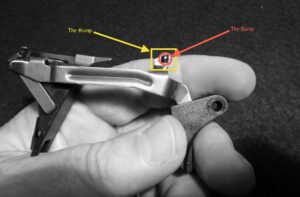
So what’s with a lighter trigger pull weight? Why is it such a big deal?
A lighter trigger pull has its pros and cons. Let’s look at them in more detail.
Less sway, more accurate shots
A lighter trigger pull means you don’t have to put too much force or effort to squeeze the trigger. You can focus more on aiming because you won’t be distracted by whether or not the gun would sway a little in all directions while you’re squeezing the trigger. Less sway also means a more stable barrel, which results in tighter shot grouping.
In self defense situations, accuracy equates to better shot placement, which is way more important than your gun’s magazine capacity or the ballistic performance of the round you’re using. A .22 long rifle (.22 lr) heart shot is infinitely more preferable than a .45 acp shot in the air.
Accuracy is also requirement in competitive shooting, especially if you are competing in IDPA where self defense scenarios are simulated and more accurate shots give better scores.
Faster shots when needed
For self defense scenarios, particularly when there are more than one person hell-bent on causing you pain, a lighter trigger pull results in you pumping lead in them faster — provided you put enough time in the range for practice.
Shooting three to five rounds of 9mm center mass will be easier than if your gun had a trigger pull of ~100 lbs (okay, that was an exaggeration but you get the point).
For practice and competitive shooting, a lighter trigger pull will give someone the edge they need for when they have to meet or exceed a target time. This is especially useful when competing in USPSA and IPSC, where faster times count toward higher scores.
Sounds Good — But What’s the catch?
For someone who only recently just acquired their first gun, or for people who don’t practice enough, the benefit of having a handgun with a lighter trigger pull might be insignificant and even questionable in self defense situations.
I personally have never found myself in such a situation where I had to pull my gun’s trigger at someone to survive. I attribute this to me being observant when walking outside especially during night time, as I’ve read in a few online articles such as this one that criminals tend to be attracted to people who are unaware of what’s happening in their surroundings. Often, just talking to people while looking them in the eye does the trick, at least for me.
But I’m almost certain that if I get in such a situation where I would have to draw my gun to stay alive, I wouldn’t have problems pulling the trigger even if it had a 15-lb. or greater pull because of a hormone all of us are capable of producing when subjected to stress: adrenaline.
In highly stressful life-threatening situations, our body gets pumped up with it, which makes us physically stronger to the point that we can lift objects much heavier than we normally could.
Heck, a lighter trigger pull might even result in accidental discharges in life-threatening situations where we can lose fine motor control and fumble with a gun’s grips and trigger.
Trigger Discipline
If you’re not being careful or if you just haven’t developed what firearms enthusiasts like to call “trigger discipline” as a habit yet (i.e. the habit of holding your gun without sticking your index finger inside its trigger guard, as shown in the photo above), a lighter trigger pull might result in an accidental discharge — you might accidentally pull the trigger and fire a round, which might cost you your life or someone else’s.
Unlike the 1911 that has two external safety features (grip safety and thumb safety), Glock handguns have no external safety features other than the one built into the trigger — the moment it is actuated, even when the user doesn’t intend to, the gun will shoot.
So that is the catch. The only real safety for any Glock pistol is for the user to have trigger discipline. If you’re not too confident with this, then the Glock 34 — or any Glock for that matter — is not for you.
Glock 17 and Glock 34 Barrel Conversion
If for some reason you happen to own both the Glock 34 and the Glock 17, with those two using the same size frame, their slides and barrels are interchangeable and can be swapped. But there is really no point in doing that, is there?
As for other caliber conversions, Glock enthusiasts have a rule of thumb: you can only do a lateral or a downgrade conversion, as converting to a higher caliber (an upgrade) might result in catastrophies of epic proportions. For example, if you have a Glock in .45 acp, you can convert it to .40 S&W (lateral) and to 9mm and .380 acp (downgrade).
Some people claim that they were able to convert their Glock 34 to accept .40 S&W rounds by changing the slide, barrel, trigger group and buying new mags. While this might work for some, we don’t recommend it. As far as doing a true upgrade conversion a Glock, the only “upgrade” conversion that makes sense is moving from .45 acp to .460 Rowland.
What’s the point in converting?
Considering the additional expenses you’ll incur after the base gun, if you’re really itching to set up a dual or even a multi-caliber system, get the highest caliber Glock you can comfortably shoot (like a Glock 20 in 10mm) so you can buy the all the available conversion kits and mags for all your favorite handgun calibers.
Unfortunately for both the Glock 17 and the Glock 34, since the 9mm is in the lower end of the caliber spectrum, you can conveniently convert to only the .380 acp or the .22 lr, which is kind of pointless.
Aftermarket Parts Availability for Glock 17 & Glock 34
These are both Glocks. Availability for upgrades won’t be an issue. And both have the same accessory rail in front of the frame so you can attach a laser or a flashlight if you want.
Glock 17 and 34 Pricing
Note: All pricing info in this article was gathered from Guns.com.
| Product Name | Where to Buy | |
|---|---|---|
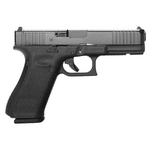 | Glock 17 |  |
 | Glock 34 |  |
Glock Ease Of Concealment

Granted the Glock 26 has seven less rounds in its mag compared to the Glock 17’s and the Glock 34’s 17-round mags, but 10 rounds of quality JHPs should be more than adequate for self defense, and there’s literally a ton of great self defense loads for the 9mm that we had to create a list of the best ones.
You can still try conceal carrying either the Glock 17 or the Glock 34 if it’s the only handgun you own and you have an absolute need to conceal-carry. If you’re tall and wear large clothes anyway, all you’ll need is a good inside-waistband (IWB) holster.
If you’re short, it’ll be difficult but not impossible. Maybe a strong, comfortable leather shoulder holster will do the trick.

If I have a Glock 34 as a CCW, its 4.5-lb trigger pull won’t be a threat to me or my family, just to the bad guys. But your mileage may vary. So really, just get the Glock 26.
Glock 17 vs. Glock 34 – Conclusion
Concealment talks aside, if you only need a range or competition handgun in 9mm and you have to choose between these two, you should get the Glock 34. It will shoot faster and more accurately with its slightly longer and heavier barrel and its 1-lb. lighter trigger pull on it.
But the Glock 34 is also $99 to $114 more expensive than the Glock 17 (depending on which Generation you’re looking to buy), which makes it a bit of a hard sell. So for the budget conscious, the Glock 17 will be the better option.
All things considered, I personally don’t see the point in getting the Glock 34 for any practical purpose other than competitive shooting. The $$$ I can save by buying the Glock 17 can go to more practice ammo. More ammo means more fun in the range.
If you haven’t owned or fired a gun before and you’re considering buying any of these two pistols, or if you’re just new to Glocks, the Glock 17 will also be a great option because of its slightly heavier trigger pull as compared to the Glock 34. But you’ll still need to keep your finger off the trigger — that 5.5lb trigger pull weight can and will result in an accidental discharge if you’re not careful.
So, for this handgun showdown, there can be no doubt: the winner is the Glock 17. If you decide on purchasing this magnificent gun, then you also might enjoy looking at the best Glock shoulder holster.



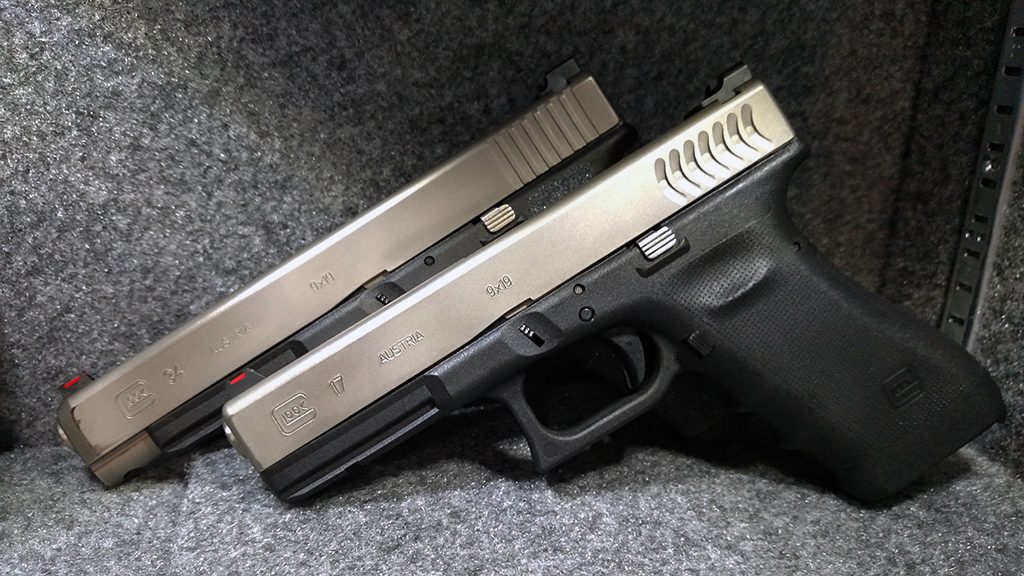
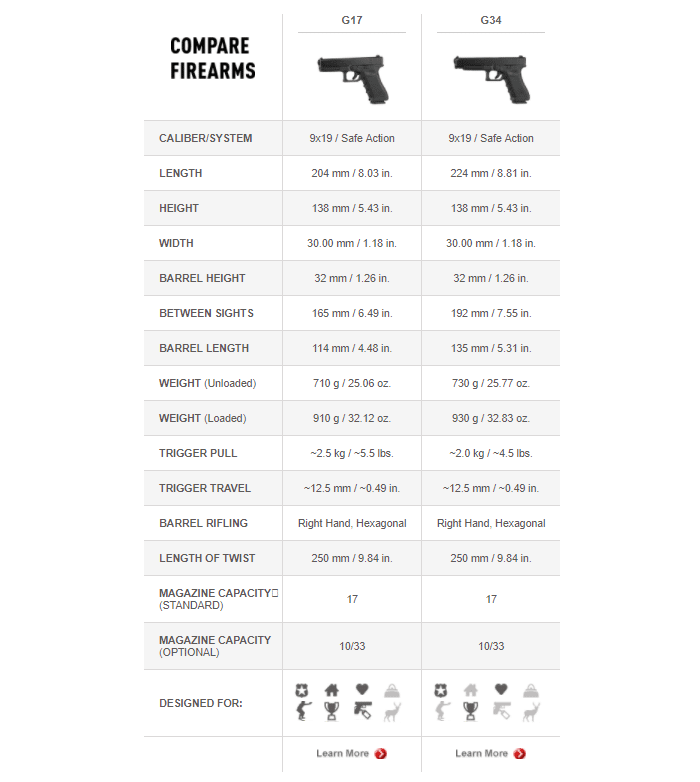


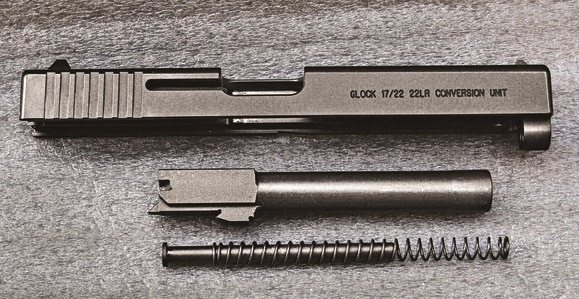
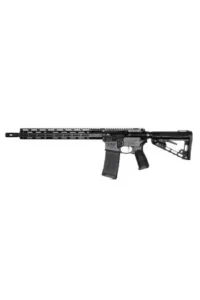
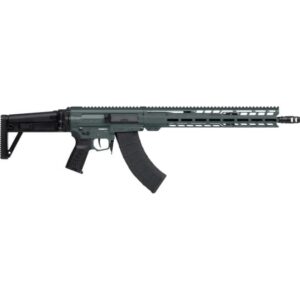
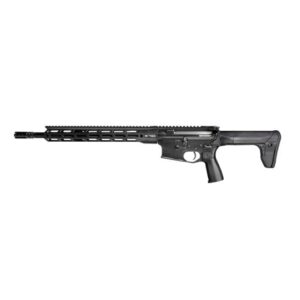
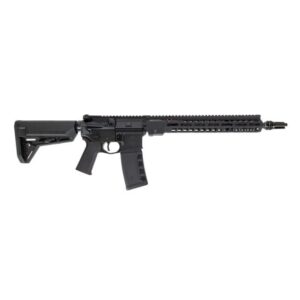





13 Responses
Good article, presently have a Glock 17 and I think this article talked me out of getting a Glock 34 in addition to my other Glocks. Will be instead working on some modifications to my Glock 17 and improving my confidence and competence level with what I’ve got. Thanks, and keep up the good work.
Do you have any information about converting from 45 to 40 or 9 to 380?
Last I checked it wasn’t possible
What I am 100% sure is possible is the following.
10m to 45acp = yes
40 to 9 to 22 = yes
9 to 22 = yes
I own a Glock 19 and a Glock 43. I also own some Colts, S&Ws and Tigers. I have been shooting handgun for over 50years and I love them. If I could only have one handgun, it would be a Glock. I love my other handguns and plan to shoot them some but, the Glock suit me better. I don’t shoot in competition, just for fun, hunting and self defense. I am older now and steel guns are a burden for me to carry and shoot. That’s why I like the Glock. They are accurate and reliable. And my Glock 19 is cheaper to shoot.than my Colt 1911. And today, ammo costs are a factor. And with all of the improved cartridges, I feel safe with a 9mm. All calibers are deadly if you can put your bullet where it counts. I enjoyed you article and it helped me decide which to buy between the Glock 17 and the Glock 34. Can’t wait to break-in my new Glock 17. Thanks again.
I believe the Glovk pistols are inherently dangerous with a round that did not fire and the breach jas to be opened to clear a hard or bad primer. It is potentially an explosive situation. The external hammer pistols can be recycled and fired again without opening a breach and losing a hand.
I put an after market secure steel push pin hard lock safety for enduring no accidental discharge from the holster to the rush to target real situation. The glocks in my professional opinion are inferior to many past and new external hammer designs for safety and security.
Robert, thanks for reading the article. I’m of the same opinion. I respect Glocks for what they are, they’re fantastic plastic guns with legendary reliability. But I’m an old-school all-steel-with-external-safeties type of guy which is why I’ve never felt the need to purchase one.
Thanks for this information. I was having trouble finding specific info on how these two handguns are different but you cleared that up perfectly. I’m new to guns and was looking for a good gun to take to the range for fun and possibly some competition later on. Will be going with a G34 Gen 5 for sure.
Thanks again
Great article. However, I certainly don’t see it being pointless to get a .22lr conversion kit for a 9mm Glock, sounds like cheap manual of arms practice and fun low recoil plinking.
Max,
Thanks for reading the article. Glad you liked it.
When I used the word pointless, I wasn’t really singling out the .22LR. I have much respect for that little caliber. What I meant was being able to convert only to two significantly weaker calibers in general (i.e. the .380 ACP and the .22 LR), it’s pointless to get either the Glock 17 or the Glock 34 with caliber conversion in mind as the choices are severely limited (as opposed to, say, getting a Glock 20 or 21, if conversion is a prime consideration). Sorry for the confusion.
The Glock 34 has an adjustable rear sight, and the Glock 17 has fixed sight (unless you get a pricey Glock adjustment tool). Sights are rarely adjusted perfectly at the factory: Google “Beretta M9 sight issues” for a schoolin’. I would never buy a fixed-sight pistol. Name a rifle with fixed sights… Um, none? Correct.
Dave, thanks for reading the article.
I won’t argue with you on your sight preference. But I personally wouldn’t make a purchase on sights alone. Besides, if sights were a big thing to everyone, no one would buy any Glock pistol because all their stock sights are made of plastic, adjustable or otherwise. And with the huge assortment of aftermarket sights, it becomes even less of an issue.
No doubt? There is lots of doubt. Personally I see a lot of benefit in the longer slide. Then there is the trigger. Many many MANY reviews say Glock screwed up when the gen 4 came out because it has a worse trigger and that they prefer the 34 trigger gen 3 out of all Glocks which according to them is the perfect amount of pull. Not to mention many people consider the 34 the perfect Glock. Lastly they are the same frame. The most expensive way to buy a Glock is in pieces and buying either will get you a frame. Buying the 34 though gets you the most expensive slide for in some cases $50 more then later you can buy a 17 slide, but really why? If you can carry a 17 you can carry a 34. Also the author mentions they carry a 1911. Well the 34 is the exact same dimensions. Glock designed it really to go after the 1911 crowd. Lots of people carry 1911s, but for some reason when it comes to Glocks or any plastic pistol suddenly nobody can carry a full size any more and eveyone needs a compact or smaller. Makes no sense. As a first gun the larger grip and longer slide of the 34 would be great to learn on. Nobody should start with a compact IMO. So I don’t think it’s as clear as the author thinks.
Donald, I appreciate your time reading my article and I also appreciate your comment. Just a couple points I need to address:
1. “Many many MANY reviews say Glock screwed up when the gen 4 came out because it has a worse trigger and that they prefer the 34 trigger gen 3 out of all Glocks which according to them is the perfect amount of pull.” – I’m aware of the horrible trigger on the first Gen4 productions, I even wrote an article on it. But the trigger issues have long been addressed as far as I know, and we’re not comparing Gen4 G17 vs. Gen4 G34 in this article. This is why I didn’t bother diving too deep on each model’s trigger. Also, G34’s trigger is supposed to be lighter and smoother because the model is built for competitions.
2. “If you can carry a 17 you can carry a 34.” – This isn’t 100% accurate. Depending on an individual’s build/stature, the weather and the kind of clothes they wear, that extra 0.83 inch of the G34’s barrel can be difficult to conceal.
3. “Also the author mentions they carry a 1911. Well the 34 is the exact same dimensions.” – Nope. I don’t carry a standard size 1911. I carry a commander-size 1911 which as I specified has a 4-inch barrel, 1.31 inches shorter than the G34’s.
4.”Lots of people carry 1911s, but for some reason when it comes to Glocks or any plastic pistol suddenly nobody can carry a full size any more and eveyone needs a compact or smaller.” -Not necessarily my sentiment, but to indulge your argument, I would think the reason for this is because there aren’t a lot of compact/ultra-compact 1911s on the market, and the few that are available (officer size) just feel wrong in the hands as far as balance (they’re too rear-heavy) — if anyone’s going to carry a 1911 the best compromise is a commander-size (which is why I carry one). On the other hand, for polymers handguns, there are way more options and these days, smaller is the norm (smaller cell phones, smaller gadgets, smaller computers, smaller cars, what have you). I’m not of the opinion that smaller is always better though, just so you know where I stand. I try to find a compromise on these things. The topic is supposed to be between what I consider a longer-than-full-size (5.31-in. barrel) G34 vs. a compact G17 and if these were the only handguns in my LGS I stand by my argument. The G17 will be the more versatile model if only because of its smaller size (easier to conceal, good for beginners). The G34 is more of a special purpose handgun, at least that’s how Glock markets it (for law enforcement, competitions and enthusiast which do not make up the majority of buyers). Do check out their website or talk to their sales guys if you’re in doubt.
My two carry guns are a Walther Q5 and Glock 17L OWB with suit coat or vest if I absolutely must go small it’s a G42. I shoot the 17L in GSSF matchs and the Q5 for all others. With the larger guns I will hit my intended target as they are my best shooters. so, I try not to compromise performance for comfort. If ever needed performance is what counts